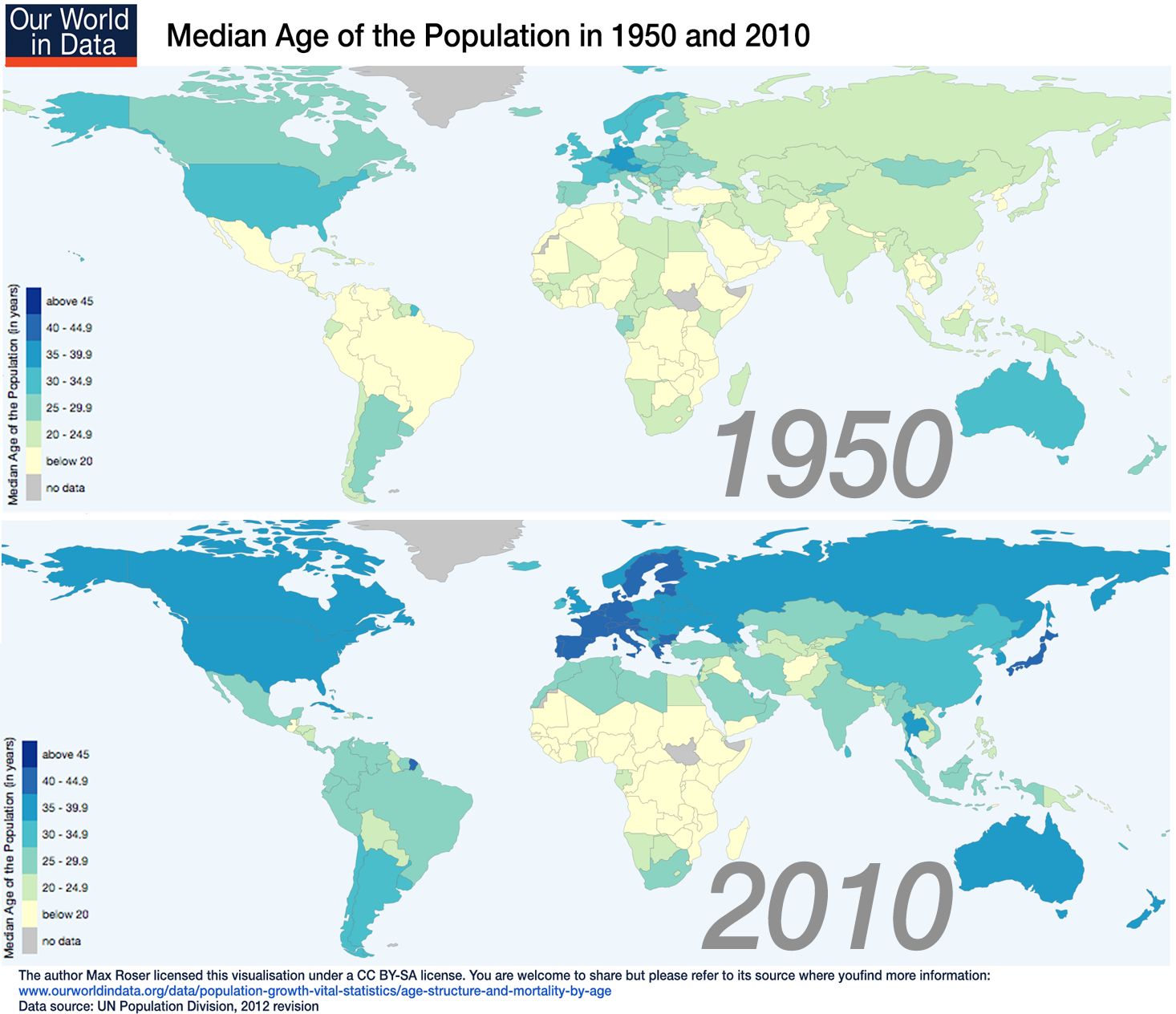The future, seen from the past
Alexander the Great conquered most of the ancient world when he was in his twenties. He died at 33, his cause of death never revealed. But whether it was a mysterious disease or poison, it seems that the great general was in line with the average life expectancy of his period.
The attitude towards the old age changes constantly with the increase in life expectancy: the 70s of today are the 60s of the eighties, just 30 is the new 20. But these changes seem to be the tip of the iceberg. Judging by technological predictions, the Jewish birthday blessing “May you live until 120” will soon become a form of an insult. The medical and technological developments are aimed at a very ambitious goal – life expectancy of at least 150 years. Sound absurd? Well, 100 years ago, the average life expectancy we have today, which according to global statistics is 80, would have sounded delusional as well. Scientists and futurists are convicted that life expectancy of 150 years is not a matter of science fiction, but simply a matter of science.
Researchers have been able to extend the life of laboratory animals by more than ten times strictly by changing the structure of their DNA. More than $1 trillion has been spent on biomedical research in the past 20 years, with the science of aging research recently considered one of the strongest shares in medicine. Even last year Google invested about $400 million in an artificial intelligence engine that is expected to be uncannily similar in structure to the human brain. The optimistic forecasts for such mega-lives speak of the current decade, so that those born today can already reach the age of 150. The more cautious are talking about 60 years from now.
But although this is all a function of science, the elongation of life expectancy is a phenomena that raises many difficult ethical questions – for example, the question of whether the term “optimism” fits in this discourse at all; to the longed-for goals of extending our lives as much as possible can have far-reaching consequences for humanity. It is not at all certain that they are all taken into account in research laboratories, which are constantly working on it. Does anyone ask the basic question, “Is such a long life desirable?”
We Have The Technology
“When you talk about extending your life span, you are necessarily talking about technological developments that will lead to a radical extension of life, so that we’ll live to 150 or even to 200 years old,” says Dr. Roy Cazana, a futurist and nanotechnology expert, the author of “The Guide to the Future.” “It sounds like a fantasy to most people, mainly because we can not understand the magnitude of technological changes. Advanced medicine is based on information technology, and thanks to it, medical capabilities increase twice every year or two. We know this in computers: in the beginning of the last century, the computers were made of bronze and operated with a bicycle wheel.”
The rapid technological development has brought us the possibility of mapping the human genome: for $1,000 each, one can crack their genetic code. In a few years, Dr. Cazana believes the price will drop significantly, and technology will be even more available. Understanding what is happening within our bodies and the ability to identify the source of various diseases will give us the ability to actually correct defective genes. For example, it takes a long and complex process to try to understand the source of the gene that causes a particular disease, and what other diseases it may cause. Therefore, medicine is usually concerned with the treatment of the disease and not with its genetic identification. This is also the reason that some diseases often recur in relatives of the patient.
Cracking the individual genetic code will in fact allow preventative treatment by identifying the diseases in which a person may get sick. Researchers from the Hebrew University of Jerusalem have already developed an innovative online tool that will allow doctors to identify genetic mutation in their patients, assess their chances of acquiring various hereditary diseases, and prescribe the best medication for them. Further development, such as minimizing robotics for surgical operations, technological developments of artificial intelligence, genetic engineering and 3D tissue printing for organ exchange will enable us to have previously known capabilities we’ve seen only in science fiction – like DNA repair, remote control of our bodies, and most importantly, life without a deadline. In the field of orthopedic implants, for example, this is already happening: Chinese doctors were able to implant a 12-year-old boy’s spinal cord, which was printed by a 3D printer. The crippled child was able to walk. “In the end,” concludes Dr. Cazana, “we can re-engineer ourselves to stop the aging processes.”
Death: It’s Chronic
A survey of the average lifespan of a person over the course of history indicates a steady increase: anthropological findings indicate that 150,000 years ago, life expectancy was less than 30 years old. This average was maintained until about 6,000 years ago, and then gradually increased, until the end of the 19th century the average life expectancy was 46 years old. During this period, only one in 20 people reached the age of 60, and one out of 50 reached the age of 65. However, it should be noted that the low numbers were due mainly to the significant mortality rates of children and infants. Those who survived were usually able to reach ages not very far from those we know today, but only a few reached older ages.
According to the Israel Gerontology Association, the average life expectancy increases every decade by two and a half years. According to figures recently published by the Central Bureau of Statistics, there are currently 900,000 people age 65 and over in Israel, who constitute 10.8% of the totally population. Half are over 75, and about 3,000 have celebrated 100 years of age or more. In comparison, with the establishment of the state, the proportions of adults in the population were 4%. By 2035, the adult population in Israel is expected to reach 14.6%, about 1.7 million people.
The great leap in life expectancy in the Western world occurred at the beginning of the 20th century, especially with the invention of penicillin. Since then, mortality from infectious disease at a young age has declined, and a new era has begun, in which people mainly die of chronic diseases such as cancer, diabetes, and Alzheimer’s. Now, for the first time, it seems that we are facing a new era in which not only the average lifespan is climbing, but also the limits of man’s ability to live – the oldest age that can be reached.
The problem is that physiologically, our immune system is weakened starting at the age of 50, and the body becomes more vulnerable to chronic diseases. “It happens because our biological goal is to pass the genes on to future generations. Once we have completed this goal, we need to evacuate the arena, and we do not weaken, we will interrupt the evolutionary process,” explains Dr. Yaakov Ben Shaul, a gerontologist and futurist and author of “Mega Life.” “What is expected to happen in the next decade is an improvement in preventatives medicine as technology advances, so that chronic disease and decay will begin at a later age. The aging process just won’t happen. It is true that due to processes in the cells we will never be able to live eternal life, but the main cause of death, which is physiological decay, we can prevent. We already know that cancer cells that live in the body have no distribution restriction. If so, there is no problem for other cells to be able to multiply and divide again and again, until they enable the age of 150 years old. This is not a forecast of the distant future: apparently, the first children who are predicted to live until the age of 150 are already living among us. However, this has dramatic implications for the entire society in the Western world, and it is not certain that we will be able to deal with them.”
Until Death Do Us Part?
In recent decades we have become accustomed to the slogan, “The world belongs to the young.” It seems that the dominant trend is to start our lives sooner than later: study at a younger age, develop careers and establish prosperous businesses in our 20s. But all of this is likely to be more than a passing nuisance. The prolongation of life expectancy will have at least one significant effect that cannot be avoided – reversing the demographic balance. In a mega-life world, the elderly will be the bulk of the population, and the birth rate will decrease. “In the 19th century, when the average life expectancy was 40-50 years old, people lived in a state of survival,” says Dr. Ben Shaul. “If they wanted to make a mark, they had to do it at a very young age, for the simple reason that they did not have enough time.” In such a world, the ideal was the family unit. Today, when the average life expectancy is 80 years, the age of marriage increases, and with it the age of giving birth and the rate of divorce. As life expectancy continues to rise, so will the birth rate, and the percentage of adults in the society will increase. In 2025, a person of about 40 will have on average more parents and grandparents than children.”
In fact, it’s not so hard to imagine: already today the percentage of divorces is on the rise. A marriage that is “until death do us part” seems like an impossible task when it comes to 150 years.

Professor Yuval Noah Harari, a lecturer in the history department at the Hebrew University and the author of “HomoDeus: A Brief History of Tomorrow,” believes that in a world of long life, the family unit as we know it will disappear. “Today, raising children is still perceived as the very central part of life. In a world where people can live up to the age of 150, one can assume that they will marry for the first time at the age of 50, and then they will have another 100 years of life. Is it realistic to expect a marriage to last for 100 years? Even the Pope wouldn’t be so naïve.”
And since science now allows women to have children at any age through out-of-body fertility treatments, there is a prediction of a decline in the birthrate, that women in their 50s will have at most two children. “When these women reach the age of 100, their children will be about 50 years old, but they will still have another 50 years of life. In fact, the two decades that these women spend raising children will be a relatively minor chapter in their lives. It’s hard to imagine what a parent-child relationship would look like in a world like this,” says Professor Noah Harari.
Alone in the World
In fact, an in-depth reflection of such a future might be quite frightening. “In a world of life expectancy so long, parents will not keep in touch with their children,” predicts Dr. Ben Shaul. “The traditional family unit as we know of today has the benefits of raising children and preparing them for life. A person in a mega-life world will not have a home to return to.”
And this is perhaps the most difficult derivative of the disintegration of the family unit: mega-life seems to bring with it mega-loneliness in a package deal. “Although a model of multiple relationships and exchanges between spouses over the course of life brings with it very diverse family cells, such as children, grandchildren, and great-grandchildren, there is also a sense of distance and isolation.” Professor Israel (Isi) Doron, head of the Department of Gerontology at the University of Haifa, predicts. “Multiple relationships will result in the absence of a family support system and dependence on social or private frameworks that will replace the dependence on the traditional family.”
And in a world of unrelated individuals and family frameworks, the path to depression is shorter than ever. “The more advanced medicine and science are, the less we understand the emotional implications of this profess and the effects on our brains,” explains Dr. Ben Shaul. “Already today the increase in life expectancy is causing an unexpected increase in depression as a cause of death. You do not have to wait to reach the age of 150, or even 100, for depression to make it’s way to the top of the list as the main cause of death.”
In Japan, one of the longest-running countries in the world, changes are already visible. In 2009, the Japanese government released statistics showing that one out of every four elderly people in the country died in their own home. In a survey conducted a year later, about 70% of those aged 60 and over reported that they suffer from severe loneliness. More than 40% expressed concern that they would end their lives alone. This phenomenon is likely to worsen, given that Japan’s population is only aging. According to estimates published this year by the Japanese Ministry of the Interior, 26% of the country’s population reached past the age of 65 – an all-time record. In total, they number 33 million people, that’s more than twice the population of children. People aged 75 and over constitute 12.5% of the population.
The difficult mental state of the elderly has created an extraordinary phenomenon: to avoid a life of loneliness, many elderly people choose to spend their lives in prisons. Thus, one out of five prisoners in Japan is over 60 – a particularly high figure compared to the United States.
Students at the Age of 90
Experts predict that changing the demographic balance between adults and young adults can become a serious social problem that will transform the labor market, forcing us to fundamentally update the existing economic models. “Even without taking into account the impact of new technologies, such as artificial intelligence, the labor market is expected to undergo tremendous changes in a dramatic rise in life expectancy,” says Professor Harari. “Today we assume that a person learns a profession at the age of teens and twenties, and for the rest of his life he works in the profession he chooses. We learn new things, of course, even at the age of forty-fifty, but life is divided into a period of study, followed by a period of work.”
When the average life expectancy will reach 150, all of this will have to change. “People will have longer careers, and they will have to reinvent themselves again and again even at the age of 90 – all the more so in a world that is constantly changing,” predicts Professor Noah Harari. “At the same time, people will not retire, and will not make room for the new generation, with all its ideas and hopes.” Professor Doron claims that the company will have to make a deep conceptual change and understand that the studies do not necessarily end at the age of 25, the work is not matched for the ages of 30-65, and leisure does not start at the age of 70. “Once the society emerges from this pattern, it does not matter how long we live – people will understand that it is possible to go to school at the age of 80, to take a few gap years at the age of 30, and to bring children into the world at the age of 100.
Work is Our Life
The pension problem has been in the headlines in recent years, with the understanding that retirement at 67 is no longer relevant. Beyond the fact that people need work and purpose in their lives, a situation where pension funds will have to finance the lives of million of people over many years are unrealistic. American economics estimate that in 2000 the economic dependency ration in the United States was 21.7 retired people for every 100 employees. This means that five employees contributed to the pension of every single adult over the age of 65. In 2050, economists predict, these dependencies will almost double, when there will be 38 pensioners for every 100 employees. If the old-age pension remains the same, the adult pension burden on young workers, usually expressed in the form of taxes, will be more than double.
In Israel, the situation is no different, but additional characteristics are added to it. While the secular sector is expected to decline in fertility and an increase in the rate of adults (according to the Israel Gerontology Association, the rate of 60 year olds, currently 11%, will double by 2050.) In the ultra-Orthodox sector and in the Arab sector, such a decline is not expected. “This means that the secular population in society will decline, so much so that they will be a minority,” says Dr. Ben Shaul. “And this minority will be an adult.” As a result, the ratio of working people to non-employees will be 1:1, while in Europe it is expected to be 1:3. This will lead to a situation in which there will be very few taxpayers from the labor market. In another twenty to thirty years, we will face a very significant economic problem, in which we may even see the abandonment of part of secular society by the country.”
Many countries, including Israel, are trying to solve the problem through initiatives to increase the retirement age, but experts say that this change is even more substantial for the situation of living up to the age of 150. “We must move gradually to a situation in which the question of old age will be functional and not age-dependent. In other words – aging will be individual and will be determined by the specific person’s situation and not according to this age. It requires a social change in the concept of old age,” says Dr. Ben Shaul. “A person who lives to the age of 150 years will be considered old only in the last decade of his life, meaning that most of his life he will be fit for work, so he will have to plan a long-term work plan and work for years – to make money and not die of depression.”
Professor Doron is also convinced that in a situation of living to 150 years of age, there is no room for a model of mandatory retirement age. “When you talk about the old-fashioned revolution, it’s not just about how people never lived for so long, but about why there were never so many elderly people in the population. In a world of dramatically higher life expectancy, if there is no fundamental change in the labor market, people will have more time in retirement than in productive work, which makes no sense.”
The solution, he says, should begin with a government that will encourage people to study as much as possible, to accumulate knowledge and skills, and to engage in a multitude of professions. “In Israel, this is less the case, but in many countries a work environment is encouraged at any age, continuing training in advanced age and business supporting entrepreneurship in the elderly. The results of this move are also evident economically: many social security systems that fund the older generations have collapsed in a number of countries. The younger generation that was supposed to fund and support the elderly does not exist. Under this model, countries such as France and England moved to a support system based on employee allowances according to their years of employment, while increasing the retirement age. Politics change more slowly than reality, but in the end there will be no choice, and the labor market will adapt itself to the rising life expectancy.”
Not surprisingly, this change is being realized mainly in Japan. Alongside the fear of loneliness created by the rise in life expectancy, Japan has the highest percentage of working elderly among the developed countries: one in three men over the age of 65 still work (in Israel the corresponding figure is less than one sixth.)
According to Professor Doron, the existing inheritance model is also expected to change or even be cancelled. In terms of inter-generational economic relations, several interesting phenomena are expected to occur: “In contract to the situation in which older people support children and buy or give them property, money or value equivalent to money – like babysitters for grandchildren – in a state of living until the age of 150 years old, people will continue to live full lives, continue to work and enjoy their life even at a very late age. As a result, they will retain their resources, and will see fit to spend more on their pleasures and leisure, at the expense of children’s inheritance. By the time the property reaches the next generation, they will themselves be very old.”
There’s Simply Not Enough for Everyone
Humans are not the only factor in the equation. Resources on Earth are also playing a major role, and as the number of lives grow, so too will the lack of basic resources. According to optimistic predictions, in 2050 the world population will be 10 billion people. The pessimistic scenario speaks of a higher number. Professor Israel (Izzy) Borovich, Dean of the School of Economics and Management at the Tel Aviv-Jaffa Academy, is not sure that the universe can actually hold such an immense quantity of resources for so many people.
“The world is having a much more difficult time providing food even now, which is the reason I expect more wars, because their job is to evacuate a certain number of people from Earth,” says Professor Borovich. “The water resource is also lacking. Therefore, anyone who talks about increase in life expectancy isn’t taking into consideration the reality of the Earth: hundreds of thousands come to European countries, but they can no absorb so many people. With all due respect to medicine, science and technology, humans do not live alone in this world. They live in a particular environment influenced by carious natural factors, such as global warming.”
Prof. Borovich predicts that the existing attempts to develop food mechanically will bear fruit, but the quantities of food will not increase. The depleted natural resources, along with the lack of physical space on Earth, will lead to severe distress. “The world will probably not be about to provide food or housing for everyone,” he says. “Even if the number of elderly people comes at the expense of young people, the numbers in population are still very large. In some cultures, for example in Africa and Thailand, fertility will continue to rise. And since the world is one unit, when there is no more room in Africa, people will eventually come to Europe.”
The Fight for Life
Beyond the economic and demographic changes, mega-life will also have far-reaching political and ideological implications. Experts also warn against civil war, which will take place between those who will have a long and happy life and those who do not. In other words – among those who will have the economic capacity to live up to 150 years old, and those who will have to settle for a shorter life expectancy. “If scientists find drugs for all diseases, they will develop effective anti-aging treatments and methods to rejuvenate people and ensure eternal youth, the immediate result, apparently, will be an unprecedented wave of anger and anxiety,” says Prof. Noah Harari. “Those who will not be able to afford these expensive treatments, which are in fact the majority of the population, will be filled with rage. Throughout history, the poor had consoled themselves with the knowledge that at least death did not discriminate among human beings, and that the rich, too, were destined to grow old, to fall ill and die. The poor will be poorer and die, while the rich will continue to live endlessly, young, and beautiful.
Dr. Ben Shaul is also convinced that the process will lead to serious class differences that will result in strong social protests. “Throughout history people have moved from a state of a life of survival to a state of life far from thoughts of death as life expectancy increased. In a state of life up to an average age of 80, we stop thinking about death at an early age because the subject seems to us from us, not related to us. And when there’s time, you stop living in a state of survival, and you start living a capitalist life. At present, society absorbs the gaps between rich and poor.” But as he says, as life expectancy increases, the gaps between those who have money and those who do not will become much deeper, for the simple reason that there are more years to establish these gaps. “We already see this today, for example, in the differences between private and public medicine. In the future, when science and medicine neutralize the genetic component, the techniques that will enable us to live mega-lives will be available, in fact, only to those who have money.”
Then the poor will begin to see that they are not fighting for a fairer distribution of resources, as is happening today, but instead will be fighting for their lives – and for their children. “We will look back to wars of life, survival, and the potential for social explosion and civil war on a scale we literally can not even understand,” predicts Dr. Ben Shaul. “Even today, new drugs are first open to the rich, but gradually they are flowing into the public healthcare system. When there is a significant leap in life expectancy, the leakage of advanced technologies from the private to the public sector will be very slow, so that eventually, living for many years will cost a lot of money. In fact, to see what a person’s life expectancy is, we’ll have to know how much money he has. Public medicine in itself will not lead people to live much longer than they do today.”
But not to worry, it seems that the rich will not have it all that great. Professor Noah Harari predicts that these people will live a life full of severe anxiety. “In a situation where all the treatments and drugs give you the ability to prolong life, but not to resurrect the dead, how terrible would it be to think that you can potentially live young and beautifully forever, but die in a car accident or terrorist attack,” he says. “If a truck crashes into me or a terrorist blows me up, I’ll still be hopelessly dead. In such a situation, people will take no risks, lock themselves up in their gold prisons, and if death does slip in and beat them or their loved ones, the suffering will be unbearable.”
Who Wants to Live So Long?
According to predictions, a world in which people live to the age of 150 years old does not sound particularly appealing. It is not surprising, then, that most people do not actually want their life expectancy to last. According to a recent survey by the Washington based Pew Research Center, 56% of adult respondents in the United States were not interested in medical treatments that will slow the aging process and allow them to live at least to 120 years.
This does not particularly move the futurist Dr. Cazana. “In the short term, people usually react very powerfully to technology in two ways: first with joy, with the success of reaching new heights, and secondly, with the fear of the collapse of all social institutions as they know them. After all, if 10 years ago I would say something to you about a social network, where everyone would post pictures of their personal life, expose personal things and spend most of the time on their devices, you would tell me this: first, that I’m crazy, and secondly that it sounds terrible. The same thing with a life expectancy of 150 years of age: technologically, amazing things are going to happen here. How will people use this technology? This I can not know.”







